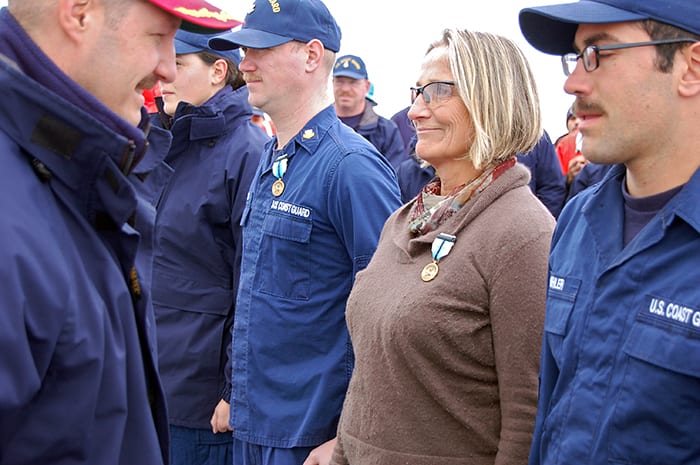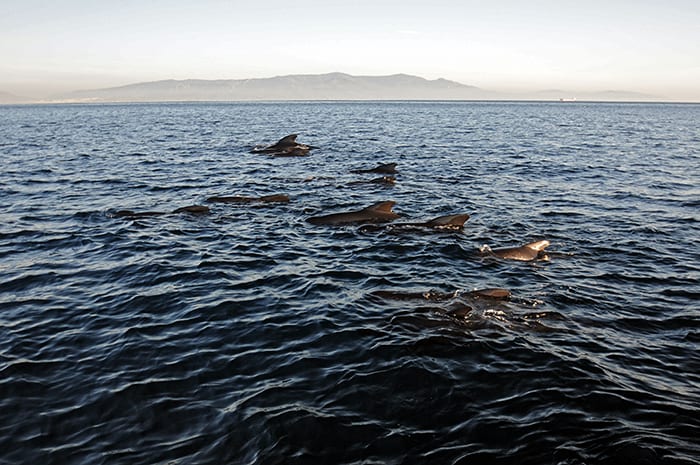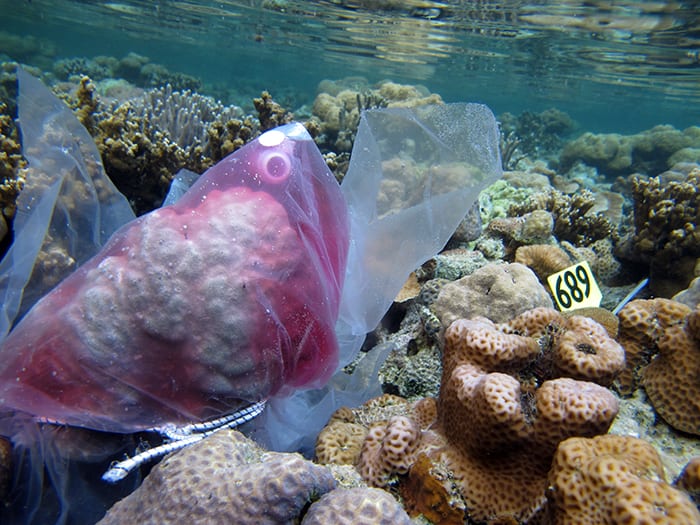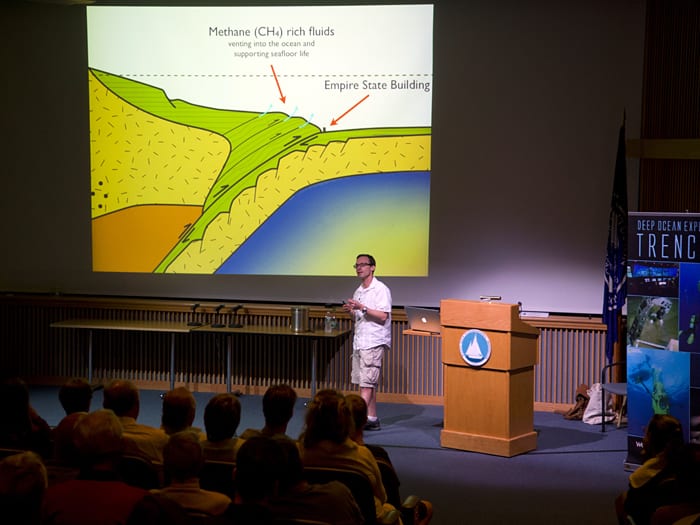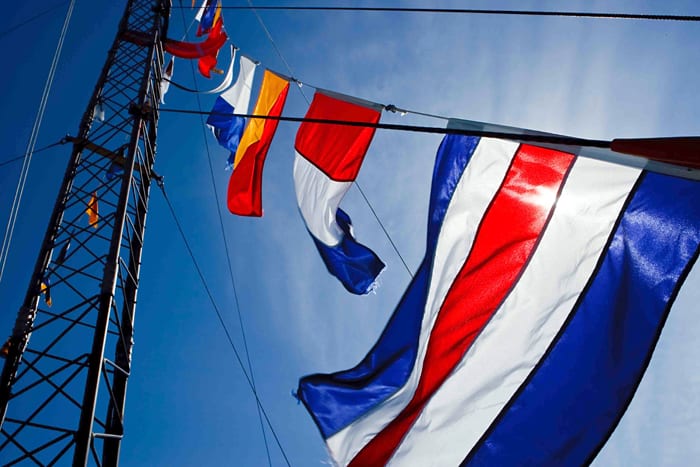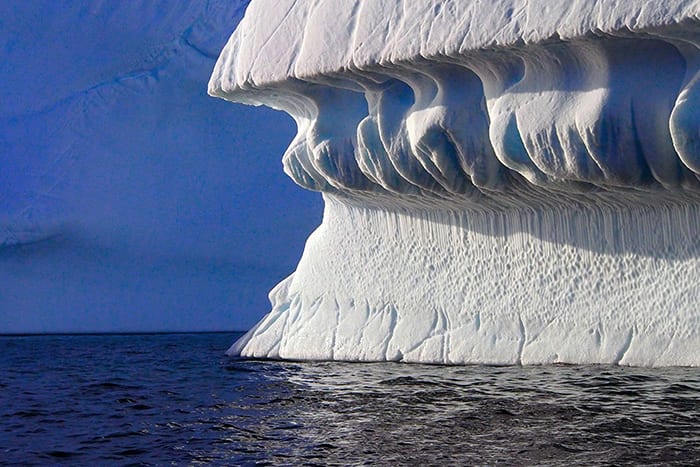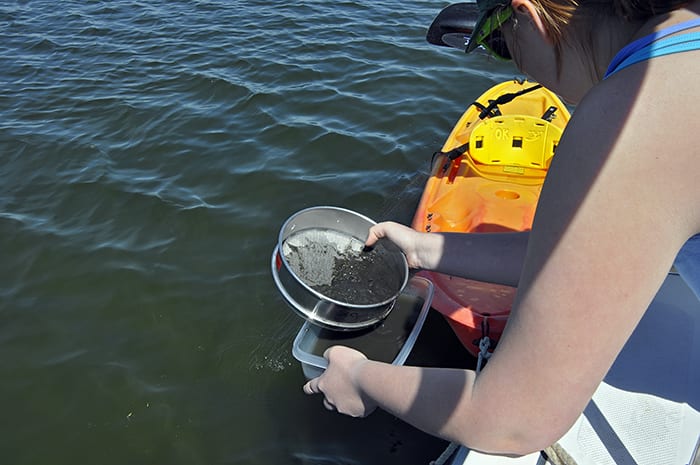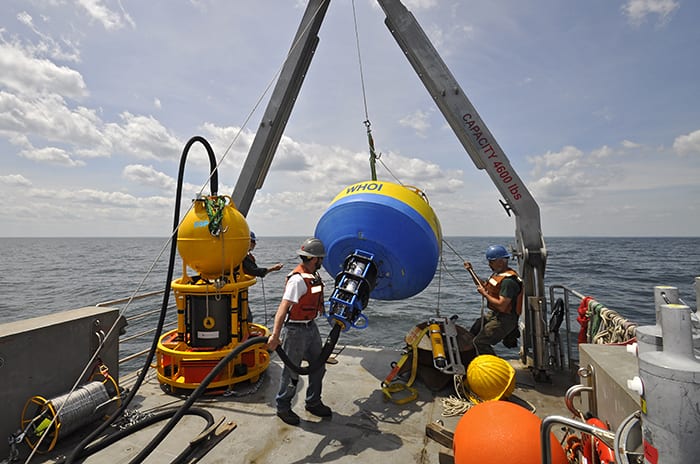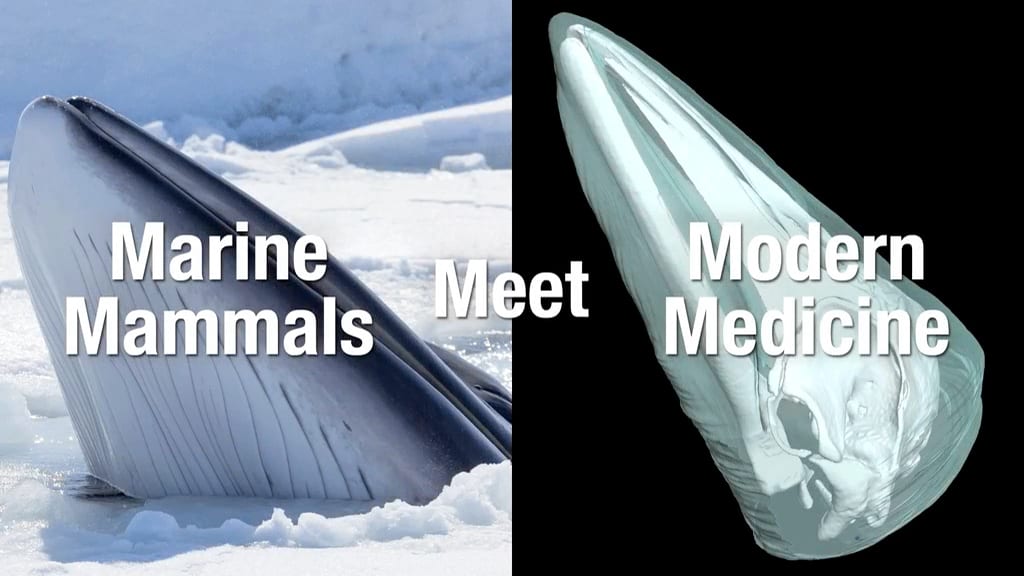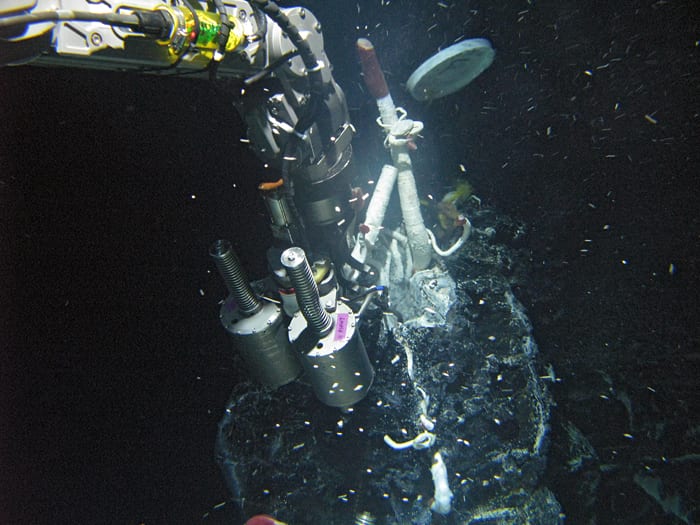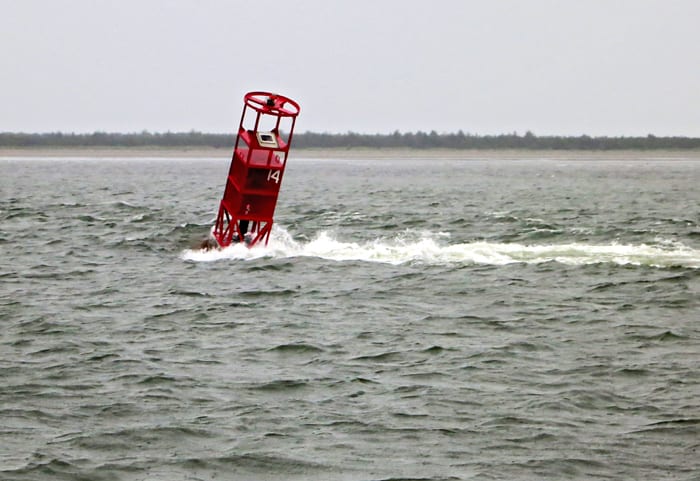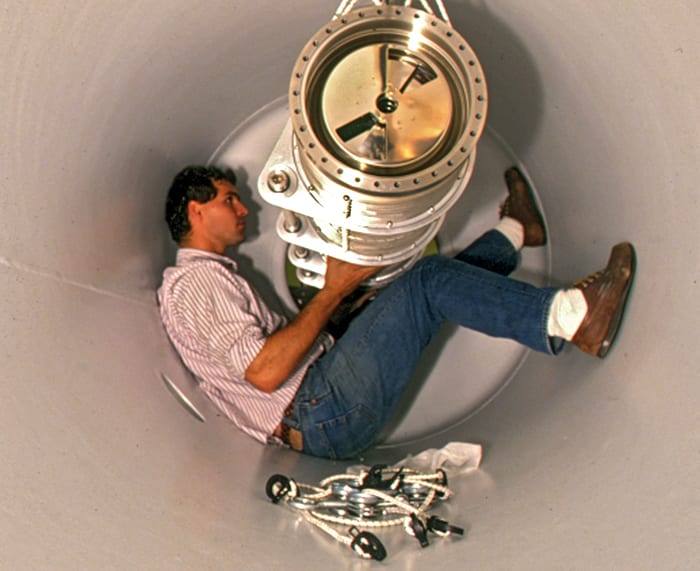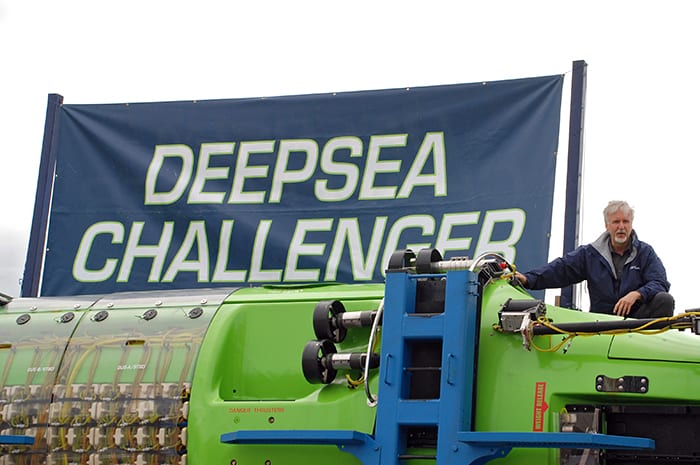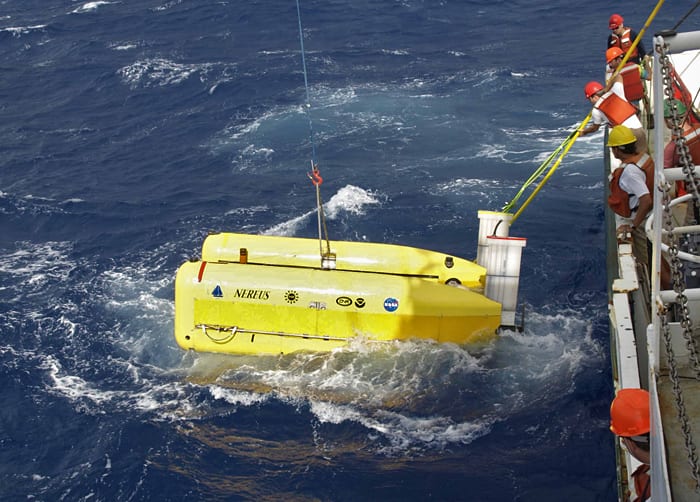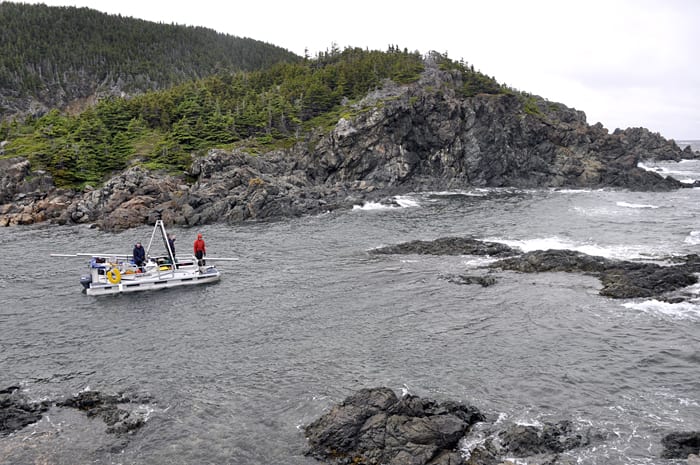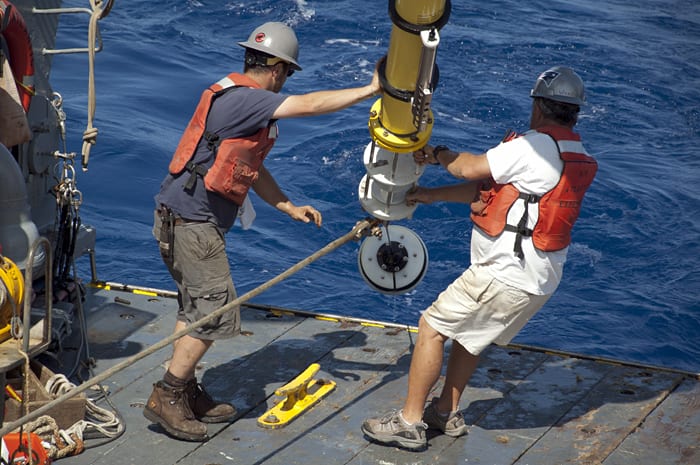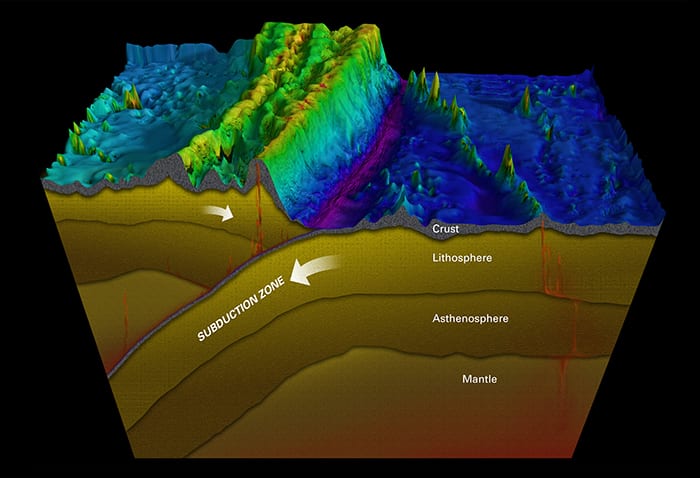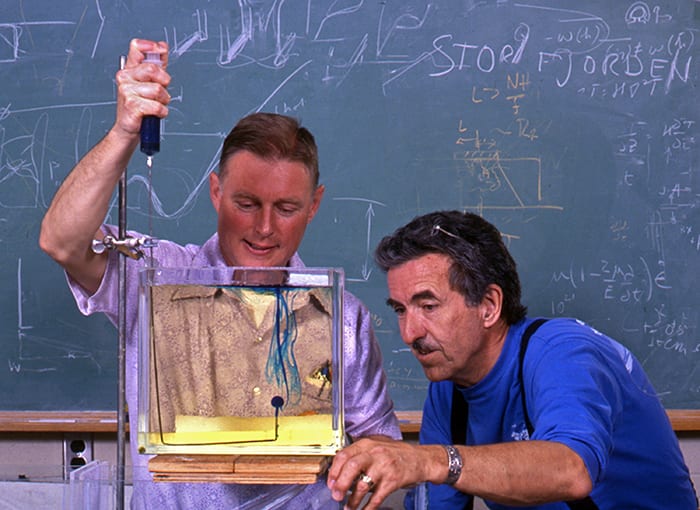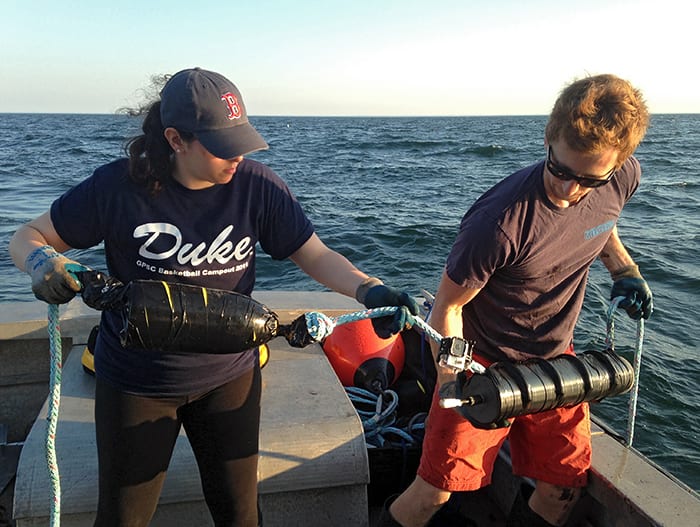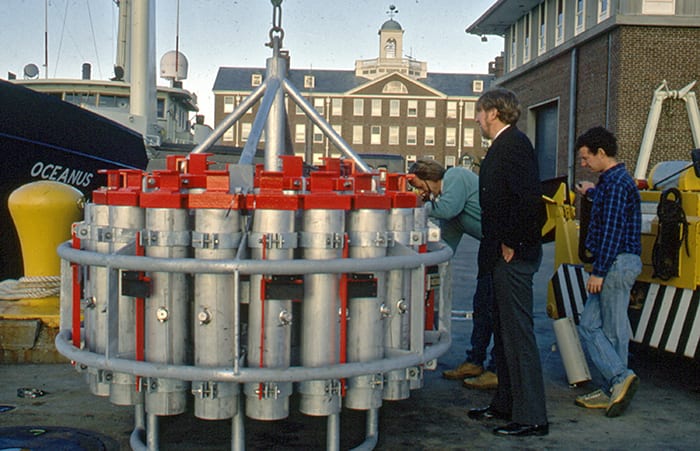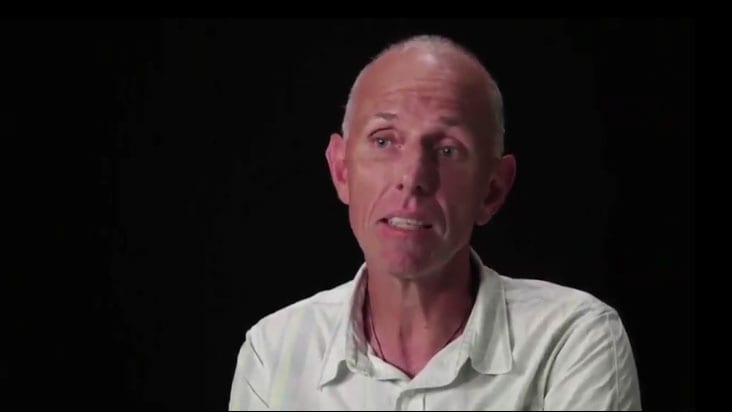Multimedia
21 Days North
The U.S. Coast Guard awards Arctic Service Medals to anyone who spends 21 days north of 66° 33′ north latitude. By the end of a recent cruise on the Coast…
Read MoreMake Way for Whales
A pod of long-finned pilot whales surface in the busy Strait of Gibraltar. The whales are the focus of a joint study by scientists from WHOI and CIRCE (Conservación, Información…
Read MoreA Coral Timestamp
MIT-WHOI Joint Program graduate students Thomas DeCarlo and Hannah Barkley cover a coral colony in Palau with a bag containing a mixture of seawater and a harmless pink dye. The…
Read MoreDig That Trench
WHOI geophysicist Dan Lizarralde explains how trenches form in the seafloor at a WHOI public event on August 24. Several hundred people attended the event, which also included talks by…
Read MoreAll Dressed Up
In spring 2013, the crew of R/V Atlantis dressed the ship with flags in preparation for a private send-off of the ship and the newly upgraded submersible Alvin. After transiting the…
Read MoreHail, Oceanus
Loaded with buoys, the WHOI research vessel Oceanus left the WHOI dock in 1990 on one of the more than 500 missions it performed for scientists over the 35 years…
Read MoreSummer Scenery
The sights of summer in Antarctica invariably include ice. Researcher Emelia DeForce captured this image of a well-worn iceberg in January 2013, the height of austral summer during a cruise…
Read MoreSearching for Forams
Visiting graduate student Inge van Dijk looks for minuscule organisms known as foraminifera in sediments from a salt marsh near South Cape Beach on Cape Cod. She brought the tiny…
Read MoreESP for Red Tides
WHOI engineers Jeff Pietro and Will Ostrom (left to right) deployed a new robotic system from R/V Tioga off New Hampshire to monitor for red tide organisms. The ESP (environmental…
Read MoreMarine Mammals Meet Modern Medicine
Whales are not the easiest patients, but CT scans, MRIs, ultrasounds, hyperbaric chambers, and other medical tools are making it easier to learn about them.
Read MoreSpa Day
Scientists use HOV Alvin’s manipulator arm to collect fluid from a hydrothermal vent about 2,500 meters (8,200 feet) underwater at a site named CrabSpa because the water temperature from the…
Read MoreSpeed Trap
The ocean near the mouth of the Columbia River, known as the “Graveyard of the Pacific,” has experienced an average of just over one shipwreck per year for the past…
Read MoreClose Quarters
Rob Naugler from the US-AMS Corporation installs an accelerator column, part of the Tandetron system at the National Ocean Sciences Accelerator Mass Spectrometry (NOSAMS) facility at WHOI. Since its installation…
Read MoreVisit DEEPSEA CHALLENGER
Explorer and filmmaker James Cameron sits on top of DEEPSEA CHALLENGER, the submersible he designed and built to carry him to the deepest spot in the ocean in 2012. One year…
Read MoreBack to the Deep
Scientists and crew recover Nereus, the hybrid remotely operated vehicle (HROV), in 2009 after it swam along a 110-kilometer (68-mile) ridge searching for signs of hydrothermal vents on the Mid-Cayman…
Read MoreExpanded View
A team from the WHOI Coastal Systems Group traveled to Newfoundland, Canada, in June to gather sediment cores from bays and marshes in the area. Their work is part of…
Read MoreA Current Affair
WHOI engineer Jeff Pietro and Scott Worrilow, manager of the WHOI Sub-Surface Mooring Operations Group (left to right), recover a current meter in an experiment led by physical oceanographer Ruth…
Read MoreDeepest Ocean
Ocean trenches, such as the Kermadec (shown here) near New Zealand, exist where one of Earth’s tectonic plates is sinking and sliding beneath another. This process, referred to as plate…
Read MoreA Fluid Science
WHOI scientists-emeriti Jack Whitehead and Stan Hart (left to right) conduct a lab experiment in geophysical fluid dynamics—the fundamental physics of oceans, rivers, magma, atmospheres, and other fluid media. Here…
Read MoreMaiden Voyage
In 1930, the newly established Woods Hole Oceanographic Institution accepted a $175,000 bid by Burmeister & Wain Ltd., of Copenhagen to build the steel-hulled ketch Atlantis. In July 1931, Atlantis…
Read MoreSun, Sea, and Sound
Working from a small boat off Cape Cod in mid-July, guest student Aimee Boucher (Duke University) and MIT-WHOI Joint Program student Nicholas Macfarlane deploy an acoustic recording device at the…
Read MorePreparing to Blow
Mike Purdy (center) and Peter Mills watch as Jim Broda prepares NOBEL (Near Ocean Bottom Explosives Launcher) for testing on the WHOI pier, circa 1990. NOBEL was developed to undertake…
Read MoreSurface Fleet
Version 2 of the autonomous surface vehicle (ASV) “JetYak” went to New York City in June, as the original was headed to Greenland. Both vehicles perform preprogrammed missions that include…
Read More5 Questions about Sharks
WHOI biologist and senior scientist Simon Thorrold discusses sharks and why they are important to a healthy ocean.
Read More
